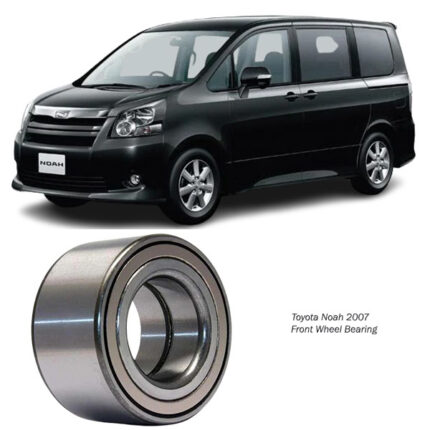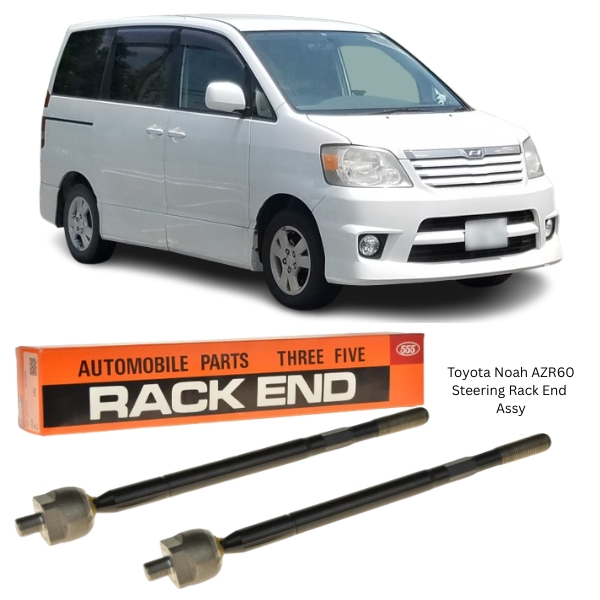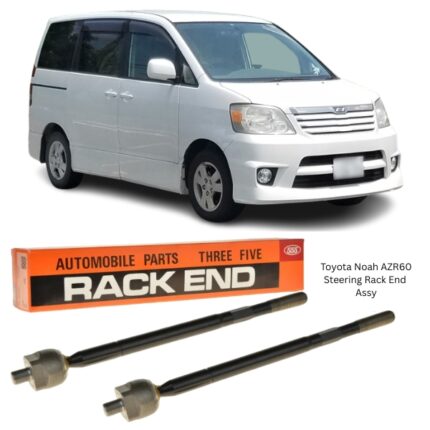Get Toyota Noah AZR60 Steering Rack End Assy SR-3920 in Kenya
The Steering Rack End Assembly, commonly referred to as the inner tie rod, is a vital link in the steering system of any vehicle equipped with a rack and pinion steering setup. It serves as the bridge between the steering rack and the outer tie rod end, playing a crucial role in transferring the driver’s input from the steering wheel to the front wheels. Without a properly functioning rack end, the vehicle’s steering responsiveness, alignment, and safety are compromised.
Designed to deliver smooth, accurate, and controlled steering, the rack end operates under constant pressure and mechanical movement. It is built to endure the stresses of daily driving, road impacts, and changing loads—all while maintaining structural integrity and optimal steering geometry.
Function and Importance
The Steering Rack End Assembly works in tandem with the steering rack, outer tie rod end, and steering knuckle to convert rotational input from the steering wheel into linear motion that turns the vehicle’s wheels.
Key Functions Include:
-
Force Transmission:
Transfers force generated by the steering rack to the outer tie rod, which then directs it to the wheel hub assembly for precise turning. -
Steering Angle Adjustment:
Allows small lateral movements of the wheels during steering input, aiding in accurate cornering and alignment maintenance. -
Load Absorption:
Handles steering loads generated by cornering, braking, or road irregularities, distributing them evenly through the suspension system. -
Vibration Damping:
Reduces transmission of vibrations and shocks from the road into the steering column, ensuring a smoother driving experience.
The rack end assembly is essential for keeping the steering system tight, responsive, and predictable—qualities crucial for vehicle safety and driver confidence.
Construction and Design
A standard Steering Rack End Assembly is composed of several precision-engineered components, each made from high-strength materials for durability and performance.
Components Include:
-
Inner Ball Joint:
-
Located at the base of the rack end, this pivoting joint allows articulation and accommodates dynamic wheel movement.
-
Typically encased in a hardened steel housing with low-friction liners.
-
-
Threaded Shaft:
-
One end connects to the steering rack while the other connects to the outer tie rod.
-
Threads may be left-hand or right-hand, depending on the application.
-
-
Dust Boot Seal:
-
Protects the inner joint from moisture, dirt, and contaminants.
-
Helps retain grease inside the joint to minimize wear.
-
-
Lock Nut or Retainer Clip:
-
Secures the rack end to prevent loosening during vehicle operation.
-
-
Corrosion-Resistant Coating:
-
Typically zinc-plated or phosphate-coated to withstand moisture, road salt, and harsh weather conditions.
-
Each of these elements is built to exacting tolerances to ensure proper fitment, smooth articulation, and consistent steering response across a wide range of driving conditions.
Performance Characteristics
A high-quality Steering Rack End Assembly offers several performance benefits:
-
Improved Steering Accuracy:
Minimizes steering play, ensuring that the steering wheel’s movement translates directly to the front wheels. -
Enhanced Road Feedback:
Delivers a more connected driving feel, allowing the driver to better sense road conditions and adjust accordingly. -
Reduced Tire Wear:
Keeps toe angles within proper range, ensuring even tire contact with the road surface. -
Increased Vehicle Safety:
A stable and responsive steering system helps the driver maintain control during emergency maneuvers or abrupt direction changes. -
Noise and Vibration Reduction:
A properly functioning rack end minimizes unwanted noise, vibration, or harshness, contributing to overall ride quality.
Signs of Wear or Failure
Over time, the Steering Rack End Assembly can wear out due to constant use, impact forces, and exposure to harsh conditions. Regular inspection is recommended, especially if the vehicle is used frequently on rough or unpaved roads.
Common Symptoms of a Failing Rack End:
-
Excessive Steering Play:
Noticeable looseness in the steering wheel before the vehicle responds. -
Clunking or Knocking Sounds:
Especially when turning or driving over bumps, indicating joint looseness. -
Uneven or Rapid Tire Wear:
Caused by inconsistent toe angles resulting from a worn rack end. -
Steering Wander:
Difficulty keeping the vehicle in a straight line, requiring constant correction. -
Vibration in the Steering Wheel:
May occur when driving at moderate to high speeds due to loose or imbalanced components. -
Visible Damage or Movement:
When inspected, the rack end may show cracks, excessive movement, or leakage of grease.
If these symptoms are present, replacement of the rack end should be performed promptly to avoid compromising steering performance and safety.
Installation Overview
Replacing a Steering Rack End Assembly requires mechanical knowledge and the proper tools. It is often performed during steering or suspension repairs, or as part of a complete front-end alignment.
General Installation Procedure:
-
Lift and Secure the Vehicle:
Raise the front end using jack stands or a lift for safe access to steering components. -
Remove the Front Wheels:
Provides clear visibility and access to the steering linkage. -
Disconnect the Outer Tie Rod End:
Remove the retaining nut and separate the tie rod from the steering knuckle. -
Unthread the Rack End:
Loosen the lock nut and unscrew the worn rack end from the steering rack. -
Inspect and Clean the Steering Rack Threads:
Ensure no damage or contamination before installing the new part. -
Install the New Rack End:
Apply thread locking compound if necessary, torque to manufacturer specifications, and secure with a lock nut or retainer. -
Reattach Outer Tie Rod and Align:
Complete the assembly and perform a professional wheel alignment to ensure correct geometry.
Although not highly complex, improper installation or skipped alignment can lead to serious handling issues. Professional servicing is highly recommended.
Maintenance Tips
While the Steering Rack End Assembly does not require frequent maintenance, following a few guidelines can help extend its life:
-
Regular Inspections:
Visually inspect the rack ends during routine servicing for signs of wear or boot damage. -
Keep Dust Boots Intact:
Torn or missing boots allow debris and moisture to enter, accelerating joint wear. -
Check Alignment Frequently:
Misalignment increases stress on steering components and leads to premature wear. -
Replace in Pairs if Needed:
If one side is worn, the other is likely nearing the end of its service life. -
Avoid Sudden Impacts:
Minimize exposure to curbs, potholes, or rough terrain that can stress steering components.
Follow us on Facebook for more parts.





Reviews
Clear filtersThere are no reviews yet.